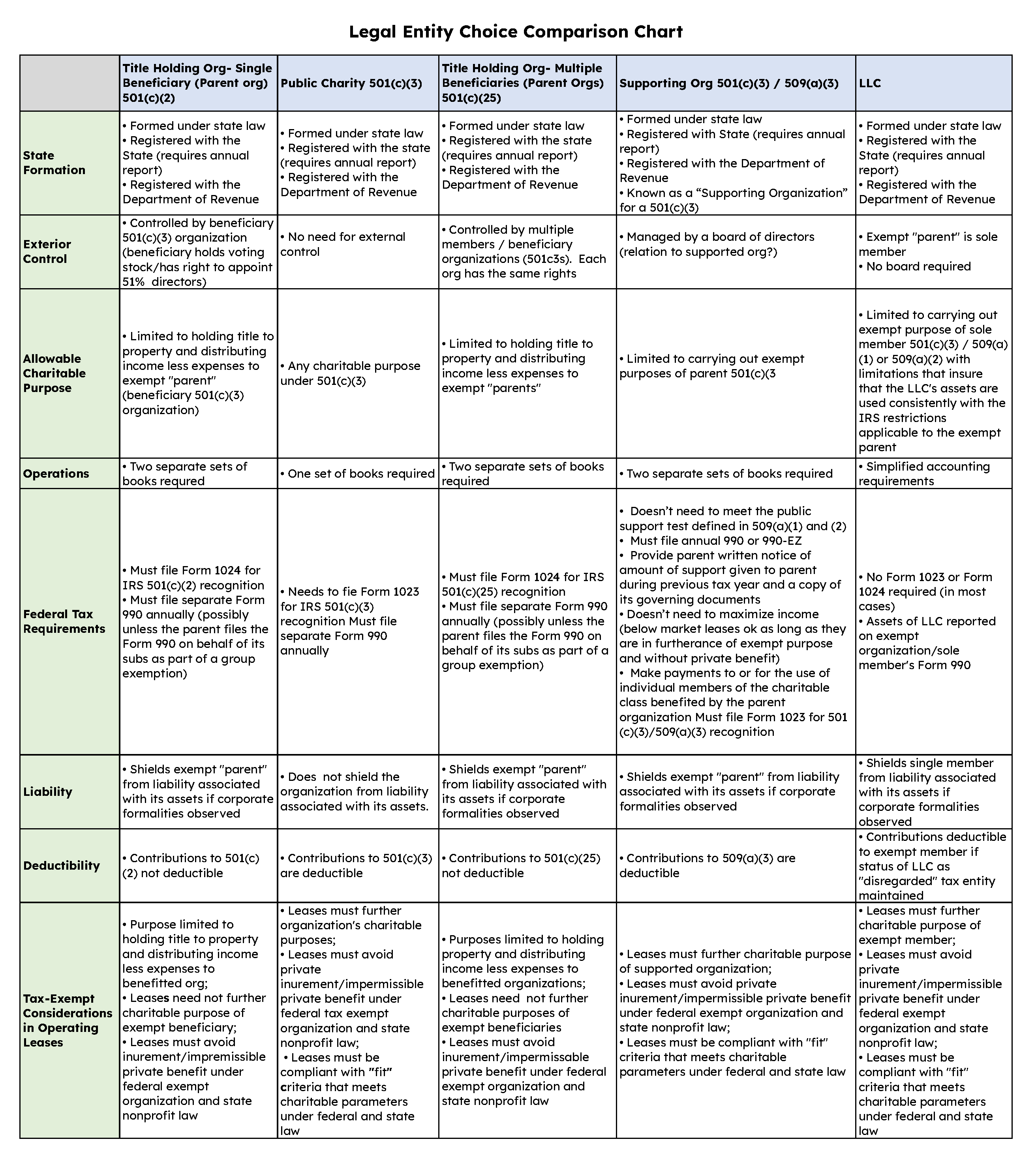Legal Entity Choice Comparison
Introduction to the Legal Entity Choice Comparison Chart
This chart is not a comprehensive list of the ways that farmers and farming organizations can hold land. It is an ongoing exploration of how to use existing legal entity choices to preserve land for agricultural use, permanently remove that land from the speculative market, and lower barriers to access for people who face challenges getting secure, long-term tenure to farmland.
Bear in mind that the existing tools were not designed to do anything of the kind. The law of property was developed to support individual (white) wealth building and residential and commercial development. Any attempt to use the law to support affordable and equitable access to farmland meets with limitations. Each entity explored on this chart has advantages and disadvantages.
For example, the single-parent title-holding organization of a 50l(c)(2) can be a useful entity choice for a group that is holding land for farmers whose sole aim is to farm, and the group wants to offer long-term, secure tenure on farmland at a below-market rate. The c2 is not a good fit for farmers or farm organizations that want local control of the non-profit board or wish to use the land for more than farming. It requires that the parent c3 organization retain at least 51% control of the board. A c2 is limited to holding title to property and related activities such as leasing and maintenance. For example, a c2 organization may not engage in educational or other “charitable” activities. It may not engage in fundraising or accept charitable donations. The c25, which is like a c2 but controlled equally by more than one c3s, is much like the c2 in terms of what it can and cannot do.

The Center for Agriculture and Food Systems is an initiative of Vermont Law School, and this toolkit provides general legal information for educational purposes only. It is not meant to substitute, and should not be relied upon, for legal advice. Each farmer’s circumstances are unique, state laws vary, and the information contained herein is specific to the time of publication. Accordingly, for legal advice, please consult an attorney licensed in your state.
